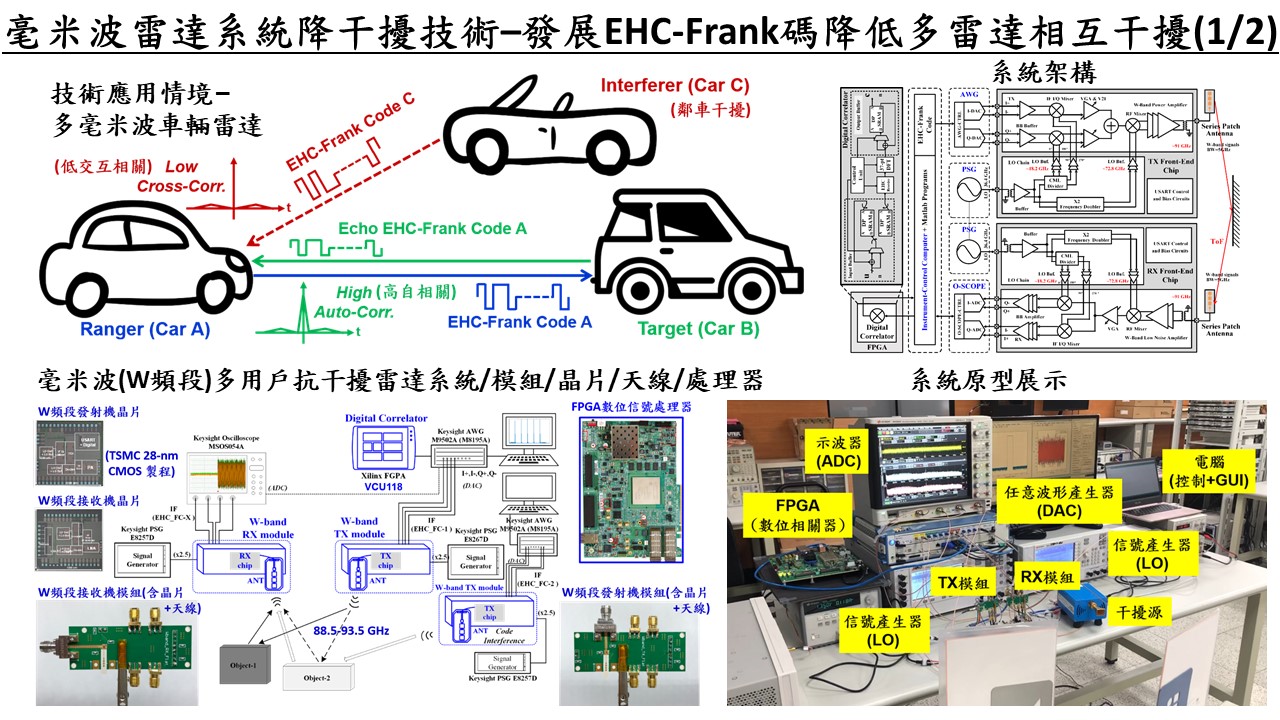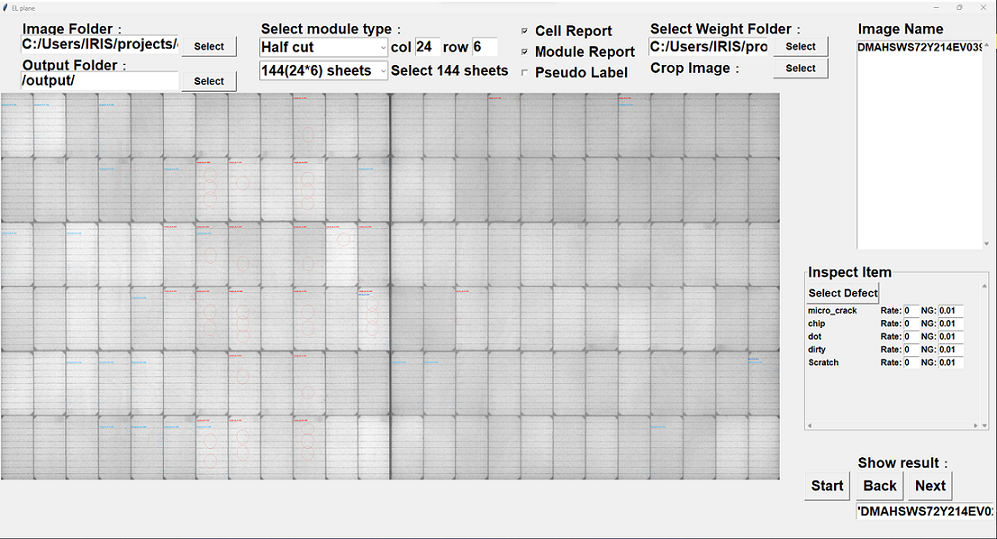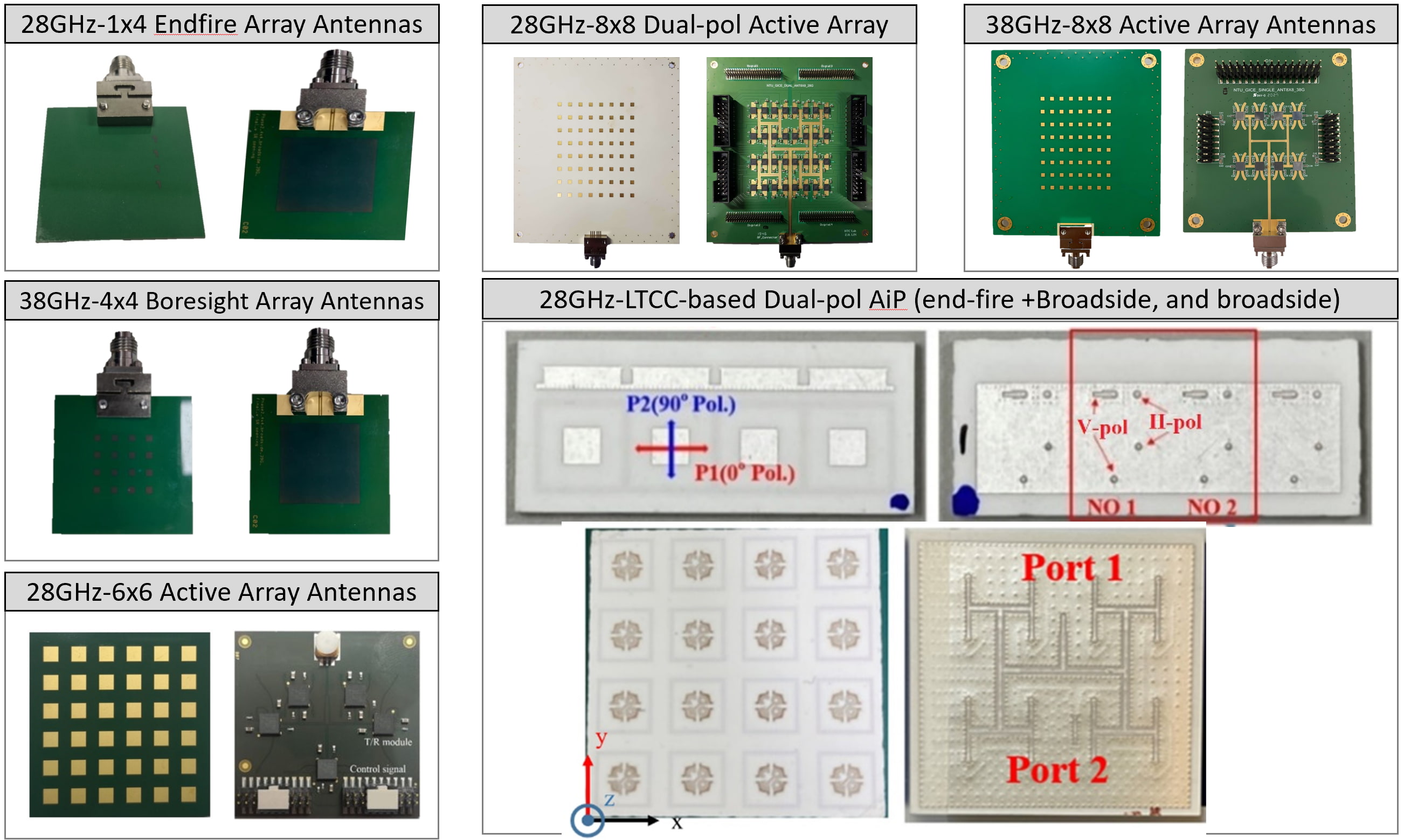

The proposed technology includes 1) EHC-Frank coding to reduce interfer
ence in a multiuser millimeter-wave (mmWave) radar system and 2) 3-D Pi
llar-based shielding to reduce electromagnetic interference (EMI) in a mm
Wave radar system-in-package (SiP).
MmWave radars that can overcome severe weather conditions have been
gradually used in autonomous driving. When multiple mmWave vehicle ra
dars operate simultaneously, their radar signals inevitably interfere with e
ach other. This interference may adversely affect the radar functions and a
ccuracy, resulting in dangerous accidents. This proposed technology 1) us
es the polyphase Frank code featuring high auto-correlation and low cros
s-correlation and 2) reduces the cross-correlation through the Extended H
yperbolic Congruential (EHC) code with one-coincidence feature to constr
uct EHC-Frank codes as radar signals with high peak-to-sidelobe (PSLR) ra
tio. Therefore, a vehicle radar assigned with its own EHC-Frank code can si
gnificantly suppress the signals transmitted by other vehicle radars after p
erforming cross-correlation, effectively reducing the interference.
Due to the short-wavelength nature of mmWave frequency, mmWave acti
ve and passive components, such as radar transceivers and antennas, can
be integrated into a SiP through contemporary packaging technology. It c
an be envisioned that EMI among the components will affect the overall s
ystem performance. The proposed technology uses commercially availabl
e packaging technology, such as fan-out wafer-level packaging (FOWLP) o
r wire bonding, to create 3-D pillars that shield the components from EMI.
No additional process steps are required. Moreover, building a row of pilla
rs instead of a wall features better process uniformity and cost-effectivene
ss.
The above two techniques address reducing interference at the macroscal
e and microscale, respectively. They can be used in parallel without conflic
t to achieve a two-fold interference reduction for mmWav
National Yang Ming Chiao Tung University (NYCU) was formed in 2021 through the merger of National Yang Ming University and National Chiao Tung University. Located in Hsinchu, Taiwan, NYCU is a leading institution specializing in technology, engineering, medicine, and social sciences. The university is known for its strengths in research and innovation, particularly in areas such as information technology, biomedicine, and artificial intelligence. NYCU fosters interdisciplinary collaboration, global partnerships, and aims to nurture professionals with strong academic foundations and leadership skills to address societal challenges and contribute to technological advancements.

Advanced Automatic Detection Technology for EL Inspection and IR Ther mal Defects in Solar Modules
Fast Beam CalibrationForming for Phased Arras of Antennas at Millimeter Wave Frequencies for 5G/B5G Applications
Hybrid CMOS Inverter Comprised of Thin Film Transistors with Hetero-channel for Monolithic 3D-ICs and Ultra-high Resolution Flat-Panel Displays Applications

Antenna-in-package (AiP) Technology Suitable for Feeding to the Smart Impedance Material for High-Gain Radiations at Millimeter Wave Frequencies
Technology maturity:Experiment stage
Exhibiting purpose:Display of scientific results
Trading preferences:Negotiate by self
*Organization
*Name
*Phone
*Main Purpose
*Discuss Further
*Job Category
*Overall Rating
*Favorite Area
*Key Tech Focus
*Willing to Receive Updates?
Other Suggestions
Coming soon!